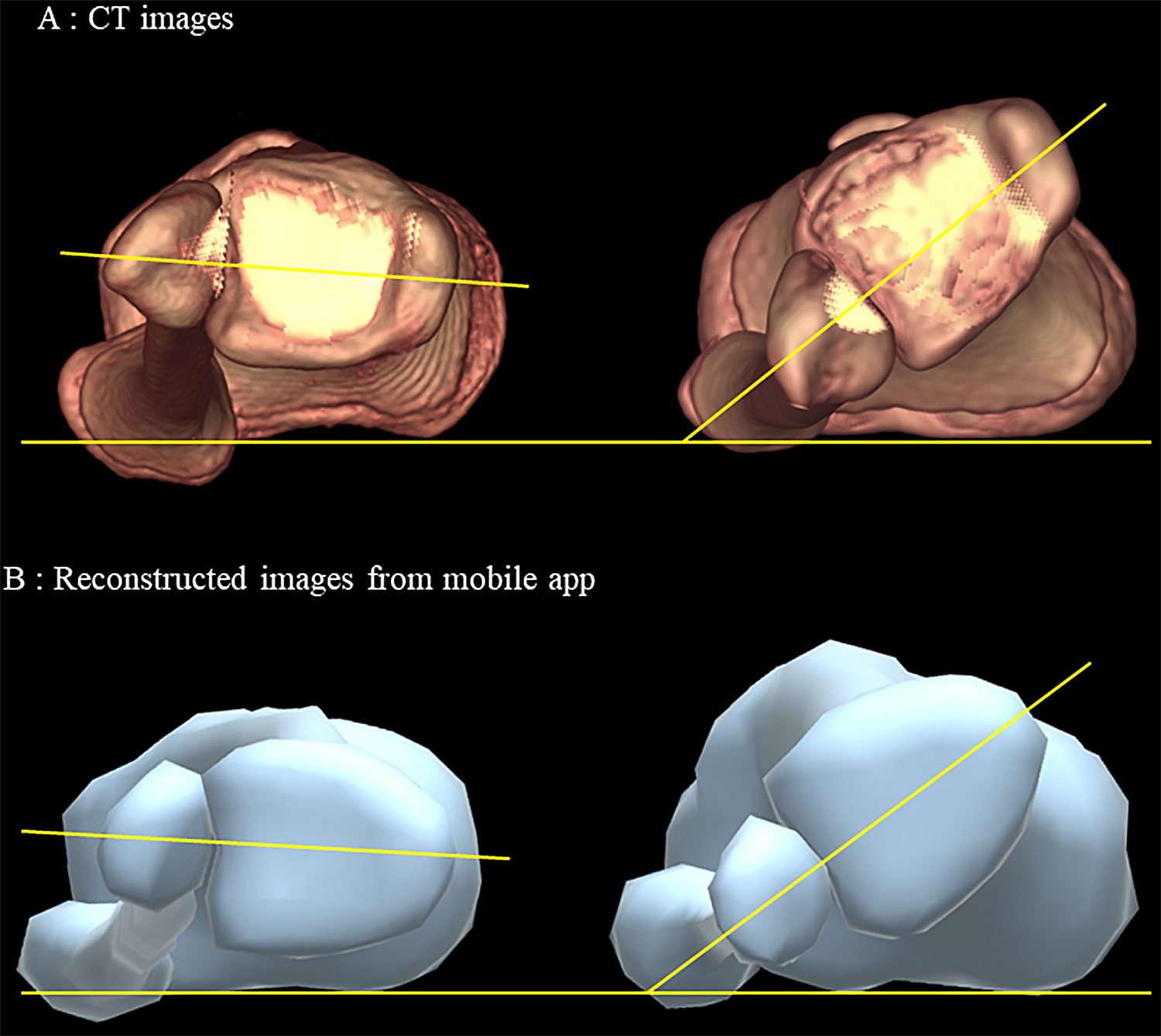Topics of interest, including a new 3D reconstruction tool for the lower leg, infection rates of pin sites treated with primary closure versus secondary wound healing, and more, are presented in the new JBJS Guest Editorial “What’s New in Limb Lengthening and Deformity Correction.” Here, we highlight the 5 most compelling studies, as selected by authors Anirejuoritse Bafor, MBBS, FMCS(Ortho), FACS, and Christopher A. Iobst, MD, FAOA.
Limb Assessment
A novel reconstruction tool for measuring tibial torsion was recently evaluated in a study published in JBJS. The investigators designed an algorithm that can deduce 3D images of the tibia and fibula from 2D images, enabling the reconstruction of 3D images of the lower leg from conventional radiographs via a mobile application. They concluded that the mobile application demonstrated “excellent reliability and validity for measuring tibial torsion”1.
Limb Deficiencies and Bone Defects
A classification system for long-bone defects based on the size and location of the defect was recently proposed. Entitled the Universal Long Bone Defect Classification (ULBDC), this alphanumeric system is modeled after the AO/OTA fracture classification system and offers a standardized approach for the diagnosis and treatment of bone defects2.
Limb Lengthening
Researchers retrospectively assessed the outcomes of 25 skeletally immature patients in whom limb-length discrepancy was treated with use of an antegrade trochanteric-entry femoral lengthening nail. The lengthening goal was achieved within 5 mm in 24 patients (96%). Three patients experienced complications requiring additional surgery, and 0 patients experienced osteonecrosis of the hip. The study authors concluded that use of the investigated nail was safe and efficient in this patient group3.
In a retrospective study of 30 patients who underwent antegrade magnetic nail lengthening of the femur with 1 of 2 types of nails, the time until full weight-bearing and the rate of regenerate bone healing were examined. The group that achieved unassisted full weight-bearing sooner had a quicker rate of bone mineralization after 20 weeks postoperatively4. As summarized by Guest Editorial authors Dr. Bafor and Dr. Iobst, who were also co-authors of this study, “earlier commencement of full weight-bearing accelerated consolidation of the regenerate bone during lengthening.”
Pin-Site Infection
A Level I, randomized controlled trial published in JBJS evaluated primary closure using a suture vs. secondary healing of pin-site wounds after temporary external fixation. The pin-site infection rate was the main outcome of interest, with secondary outcomes also assessed. Primary closure was not associated with a higher infection rate (no pin-site infections were reported in either group). Furthermore, primary closure was associated with significantly faster wound healing (a median of 2 vs. 6 weeks; p = 0.013)5.
“What’s New in Limb Lengthening and Deformity Correction” is freely available at JBJS.org.
What’s New by Subspecialty
Each month, JBJS publishes a review of the most pertinent studies from the orthopaedic literature in a select subspecialty. To read the reports, visit the “What’s New by Subspecialty” collection at JBJS.org.
Recent OrthoBuzz posts include: “What’s New in Musculoskeletal Infection,” “What’s New in Orthopaedic Trauma,” and “What’s New in Spine Surgery.”
Image from: Min JJ, Youn K, Oh S, Sung KH, Lee KM, Park MS. Development and Validation of a Mobile Application for Measuring Tibial Torsion. J Bone Joint Surg Am. 2022 Dec 7;104(23):2095-2100. ©2022 The Authors. Published by The Journal of Bone and Joint Surgery, Incorporated. All rights reserved. https://creativecommons.org/licenses/by-nc-nd/4.0/
References
- Min JJ, Youn K, Oh S, Sung KH, Lee KM, Park MS. Development and validation of a mobile application for measuring tibial torsion. J Bone Joint Surg Am. 2022 Dec 7;104(23):2095-100.
- Solomin LN, Komarov A, Semenistyy A, Sheridan GA, Rozbruch RS. Universal long bone defect classification. J Limb Lengthening Reconstr. 2022;8(1):54-62.
- Geffner AD, Reif TJ, Fragomen AT, Rozbruch RS. Use and safety of the Precice antegrade femoral nail in pediatric patients. J Limb Lengthening Reconstr. 2022;8(1):12-6.
- Bafor A, Duncan ME, Iobst CA. Early weight-bearing accelerates regenerate bone mineralisation: a pilot study comparing two post-operative weight-bearing protocols following intramedullary limb lengthening using the Pixel Value ratio. Strategies Trauma Limb Reconstr. 2022 Sep-Dec;17(3):148-52.
- Tillmann F, Hoepelman RJ, Cagienard F, Link BC, Babst R, van de Wall BJM, Beeres FJP. Primary closure or secondary wound healing of pin sites after external fixator removal: a single-center blinded randomized controlled trial. J Bone Joint Surg Am. 2023 Feb 1;105(3):207-13.



